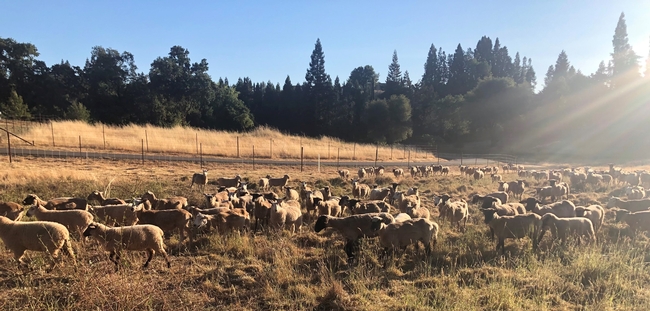Ranching, like any other agricultural business, requires a considerable amount of planning. Unlike some farming businesses, however, ranching also requires a certain level of comfort with conditions that are beyond our control. Unexpected problems can certainly "crop" up for irrigated crop production, but we generally have some lead time to make decisions about planting or finding alternative sources of irrigation water. While I don't mean to diminish the challenges that all of us in California agriculture are facing in this incredibly dry year, I think looking down the road is different for rangeland livestock producers than for anyone else.
As I wrote last month (Yup - this is a Drought!), drought can seem like a slow-moving emergency. After a late start to our grass year in November 2020, I held out hope that we'd get something like normal precipitation in early 2021. We did not; our dry spring locked in certain parts of our forage planning process. For example, the feed that had grown by the time we shipped ewes and lambs off of our winter rangeland and back to irrigated pasture in early April was all that we'd have to work with for the rest of the year. No more rain meant no more growth.
Other parts of our annual forage calendar are less certain this year. For the first time in the 16 years I've irrigated pasture for our sheep, we're facing the potential of a mandatory reduction in our irrigation water deliveries this year. The Nevada Irrigation District, who delivers our water from the high country, is looking at the lowest carryover potential in its reservoirs in its 100 year history. Consequently, the district may end our irrigation season early, or give us less water for the full season (which typically ends on October 15). This uncertainty about our irrigated pasture compounds the ambiguity about our fall forage supply - we never know when the first germinating rain will arrive, which makes planning difficult.
For many of us who rely on annual rangeland, then, autumn is perhaps our most precarious season. Many of us try to stretch our irrigated pasture as long as we can - hoping it will last until the fall rains green-up our rangeland forages. Most of us try to manage our spring grazing to conserve dry forage for the fall - just in case the rains come late.
In our small operation, we've found that a 12-month forage calendar helps us identify future problems before they require drastic (e.g., expensive) decisions. For each of the next 12 months, we try to estimate whether we'll have adequate forage. If we think the forage will be inadequate, we try to determine why. Is it a lack of quantity (are we going to be out of feed)? Is it insufficient quality (is our forage too low in protein or energy for the stage of production we're in)? Or is it a lack of stock water? By thinking through our forage projections, we're able to think about strategies for addressing them:
- If we're going to be out of feed, do we need to think about selling some animals?
- If we have dry feed that we're trying to graze with pregnant ewes, we can supplement their protein. We start thinking about buying protein now before everyone's looking for it (and driving up the price).
- If we're worried about a lack of stock water, we start thinking about how we can get water to our sheep (so they can graze the forage we've conserved).
I wish I had a crystal ball that would tell me the exact date we'd get a germinating rain - it would make planning so much easier. Without a crystal ball, however, we can start looking down the road. We can - and should - start planning now for how we're going to get through next fall and winter. Our new Drought Decision Support Tool for Ranchers provides a framework for thinking about your forage future - check it out and please provide feedback!
